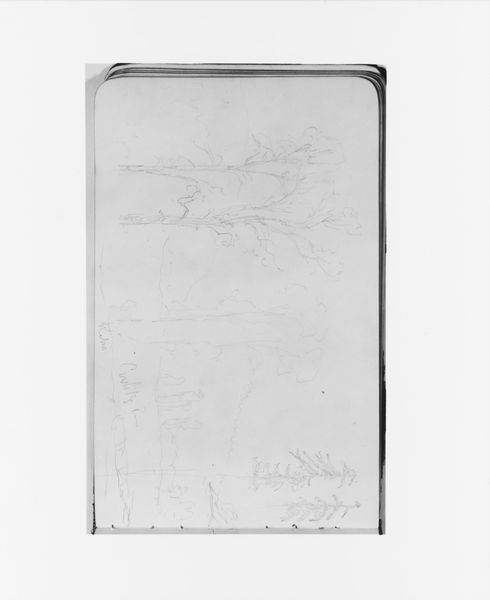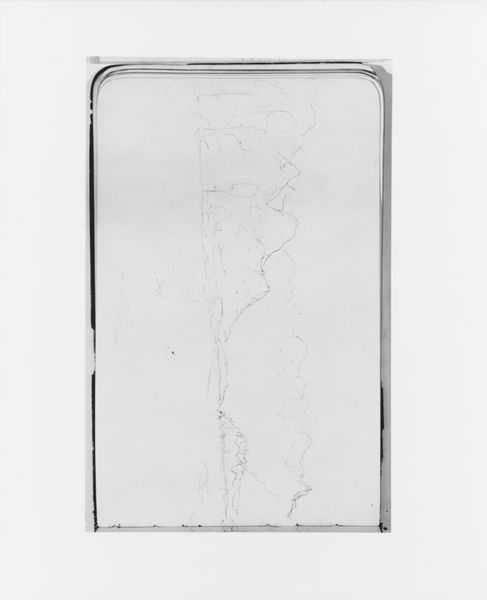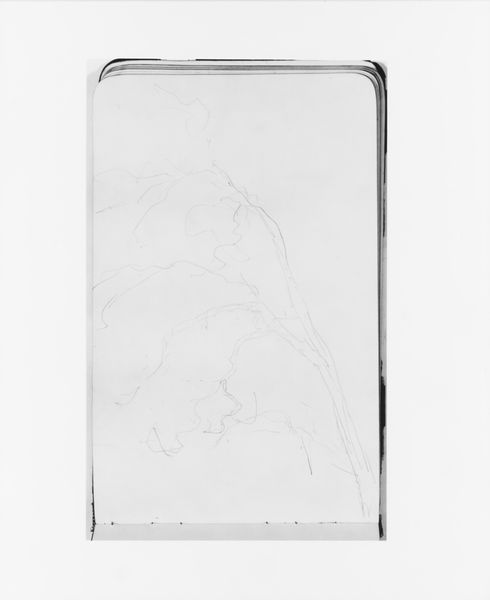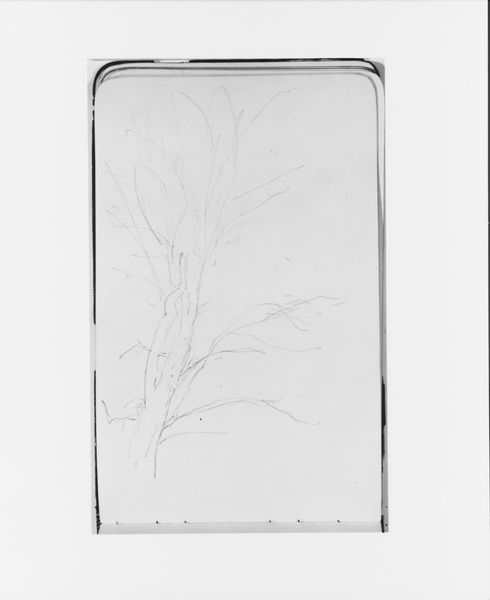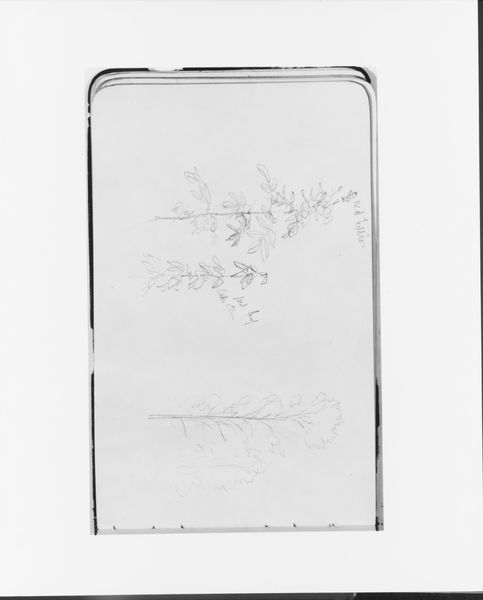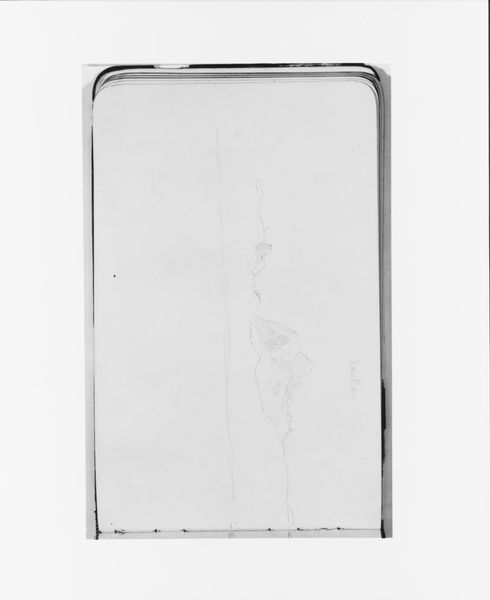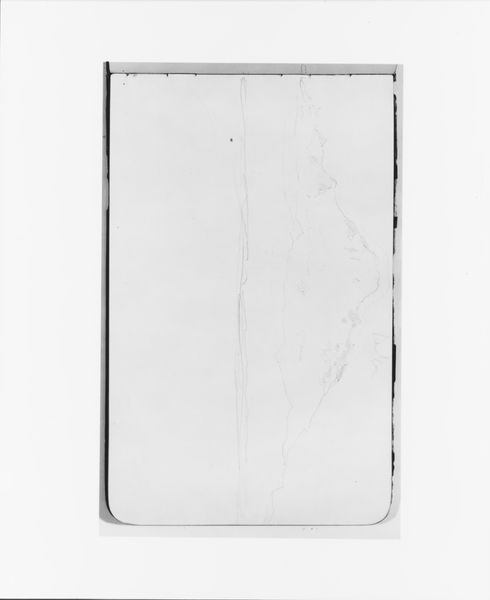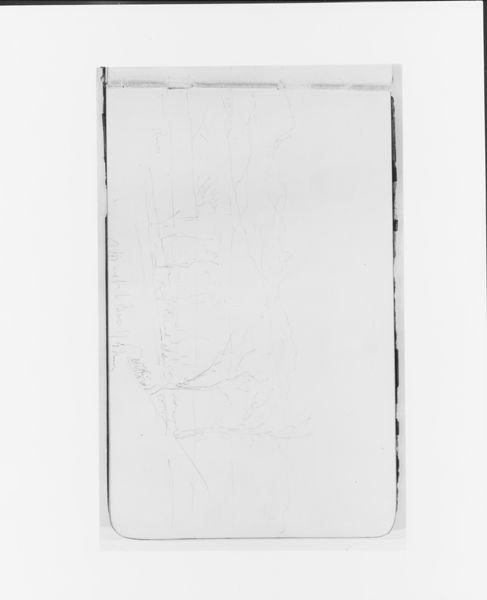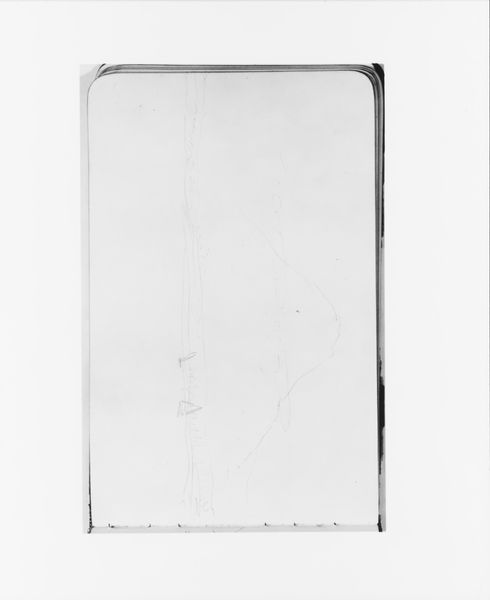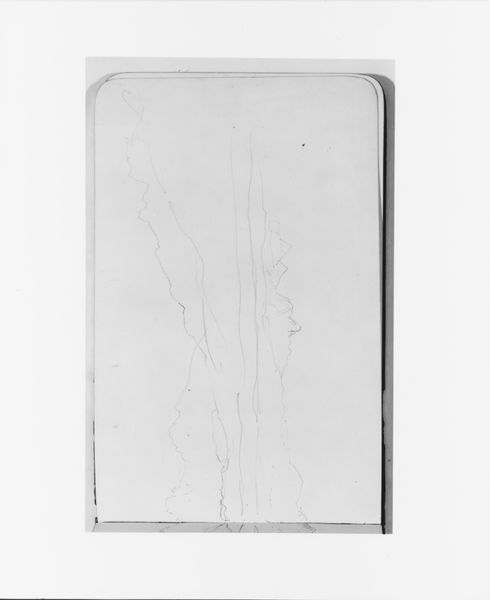
Landscape with Tree in Foreground (from Sketchbook) 1890
0:00
0:00
Dimensions: 4 3/4 x 7 3/4 in. (12.1 x 19.7 cm)
Copyright: Public Domain
Editor: Here we have Albert Bierstadt’s "Landscape with Tree in Foreground" from a sketchbook, dated 1890. It’s a delicate pencil drawing, and my immediate thought is how fragile it seems. It’s barely there on the page! What can you tell us about this piece? Curator: The seeming "fragility" you're noticing speaks volumes about the changing value of landscape imagery and its mode of production during this period. We see this as part of a sketchbook, highlighting its process as a commodity to produce the industrialized aesthetics, specifically how its availability changed access to the creation and consumption of images. The "landscape" style itself at the end of the 19th Century reflects the production of leisure and accessibility. Editor: That's a fascinating way to frame it. So, the drawing becomes more about the process and the consumption it suggests, than the actual landscape it depicts? Curator: Precisely. Consider the ease with which Bierstadt could produce these drawings – the very "sketchbook" format signifies mass-produced availability. He also worked for various railroads to produce the image and fantasy of “landscape”, enticing people into tourism and western expansion. Look at the physical evidence, how he quickly he renders the branches, the way he only outlines the tree: to understand not just WHAT is depicted but also how landscape becomes this marketable product. This allows us to reframe the context of "naturalism." What is more natural than commodification? Editor: It shifts my understanding completely! I hadn’t considered how the materiality of the sketchbook itself informs the landscape style, as a record for mass consumption instead of nature, for example. Curator: Right. It’s less about an idealized nature, and more about understanding how this object participated in a burgeoning culture of leisure and accessibility. Thinking about the economic production as “material” shapes our perspective on art. Editor: I’ll never look at a landscape drawing the same way again. The idea of viewing the pencil and sketchbook itself as commentary changes the game. Curator: Exactly. By centering the tools and social context, we challenge traditional notions of artistry and artistic value and approach a much deeper cultural critique.
Comments
No comments
Be the first to comment and join the conversation on the ultimate creative platform.

